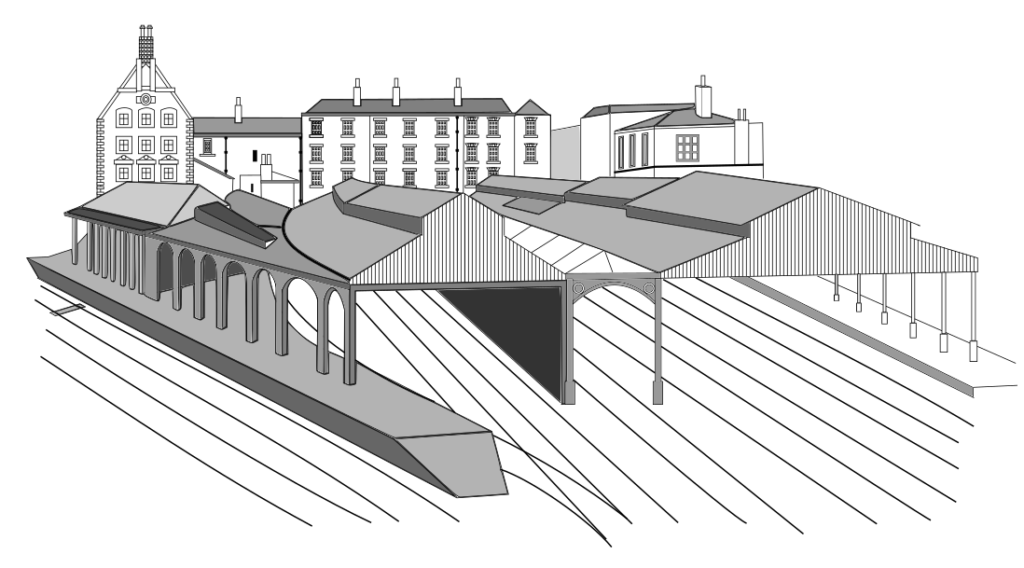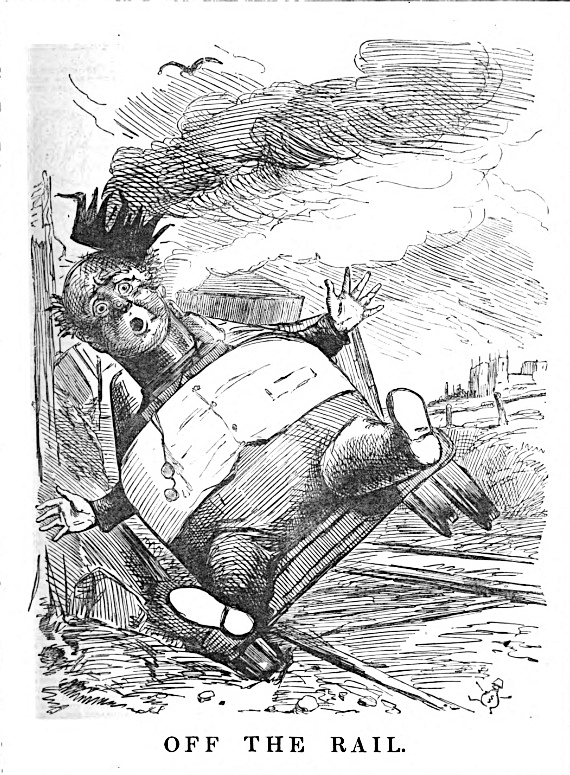Who was George Hudson? This is the question I explore in my latest not-so-romantic railways book. Here’s a very quick rundown of who George Hudson was.
George Hudson was born in 1800 in the small Yorkshire village of Howsham, England. And sadly George Hudson was orphaned when he was just 8 years old. His childhood ended when he paid a fine for fathering a child outside of wedlock at the age of 15 and left Howsham on the dusty road to York, the city where he would make his name.
Once in York, he started working as an apprentice draper at Nicolson and Bells drapers. Drapers are people who work in a shop which sells cloth and cotton which will eventually become clothes, rugs or anything you can make from those materials I suppose- capes?
In 1821, George married Elizabeth Hudson who was the sister of Richard Nicolson who had taken over running the drapery shop. When the two were married George became a partner in the business and it was renamed Nicolson and Hudson.
Life changes
George’s life changed forever in 1827 when his great uncle Mathew Botterill (I always want to call him Mathew Bovrill) became ill and when he died he left George almost £30,000 and a number of houses dotted around North Yorkshire. This turned Hudson into a very rich, and influential man.
There are a lot of questions about why Hudson was left the money by his great-uncle. As far as we can tell he had never had that much connection with his uncle until he had become ill, when he started to, seemingly, pay more attention to him. The majority of people tend to say that George Hudson tricked his uncle into giving him the money.
Personally, I think there is more to the story and the opinion that he conned his way into the money rose up when Hudson’s dodgy accounting practices came to light. I’m of the belief that it was Botterill who introduced Hudson to the drapers back in 1815 as he just lived around the corner.
It’s also likely he lent Hudson some of the £6000 he needed to become a partner in the business. Whilst we’ll never know for sure, I’m of the belief that Hudson was genuinely being a caring nephew and the reason there isn’t much evidence to suggest the two were close is down to the fact that nobody would have been paying attention to them. It was only when he got the £30,000 that people even started to know who George Hudson was.
I often harp on about it, but it’s so important to not just take the first piece of information you hear as fact. I’m not saying you should start going around calling everybody a liar, but do your investigations and look at multiple sources. There’s almost always more to the story. Clickbait is definitely a thing.
With a new income, living above the draper’s shop suddenly felt a little bit underwhelming for Hudson so he moved into his uncle’s former home, with his small family, on Monkgate.

The Railways
Towards the end of 1833, Hudson was invited to a meeting which was to discuss bringing the railways to York- mostly to get much cheaper coal from the local mines to fuel their factories to bigger profits.
George Rennie was hired to survey the land but when he completed it he suggested that horses would make the better power for the trains. Hudson disagreed so got his new best friend George Stephenson to convince everyone otherwise.
The George Stephenson trump card worked and it was agreed that the railway line in York would be powered by steam locomotives rather than horses, and it would connect with the North Midland Railway – better ideas all around I think!
The new line opened in 1839 and York was jubilant about it! George Hudson was mayor at the time so he held an outrageously big party to celebrate the York and North Midland Railway line opening for business. Hudson would actually go on to be Lord Mayor of York 3 times, not bad going.

The railway king
The York & North Midland Railway was just the beginning, there’s a reason why I needed a whole book to tell the story of all the railways Hudson owned- but at the height of his powers towards the end of 1847, Hudson was in control of 1/3 of the entire railway network in Britain.
He was loaded, bought luxury houses and even became a Member of Parliament for Sunderland.
He was given the nickname “Railway King” by Sydney Smith in 1844. Sydney Smith was a writer and cleric.
Fall of the king
Towards the end of 1848, people started to notice that profits were falling so started investigating and looking deeper into the Railway King’s accounts. He was found to have become very rich by selling shares from one of his railway companies to the other and making mega profits.
When the shareholders were making money they were more than happy to ignore these financial questions, but once they stopped making as much money- everyone started to complain and Hudson was made a scapegoat for everything wrong with how the railway business worked.

Exile
When Hudson’s term as MP for Sunderland had come to an end it meant he could be thrown in debtors prison so he fled England to France, where he spent the next 11 years. He then returned to England in an attempt to become MP for Whitby- but was arrested before election day.
After a few months in prison, Hudson fled back to Europe before the debtor’s law was abolished.
Husdon returned to London to live out the last couple of years of his life. Hudson passed away on the 14th of December 1871 and is buried in Scaryingham where you can visit his grave today.
This blog is just the tip of the iceberg and the smallest picture of who George Hudson was. You can find out the full story, in much more detail, in my book: The Not-So-Romantic Railways: The Railway King
What to read next
If you’ve enjoyed this Not-So-Romantic Blog then here are some suggestion blogs you should read next!
